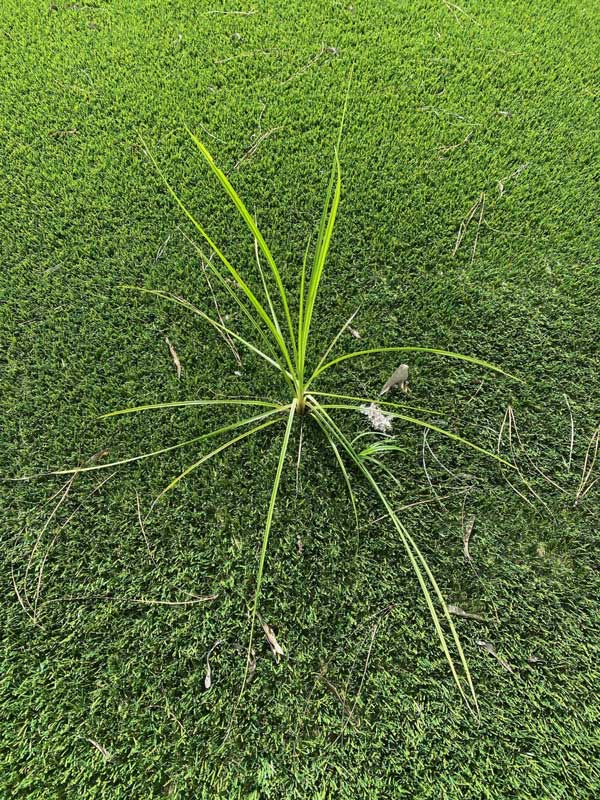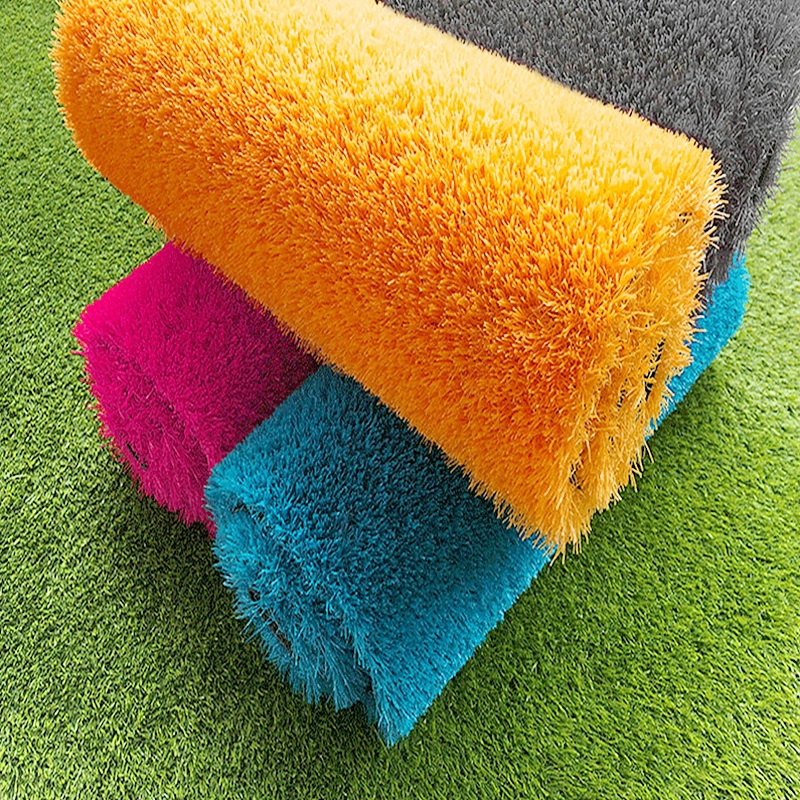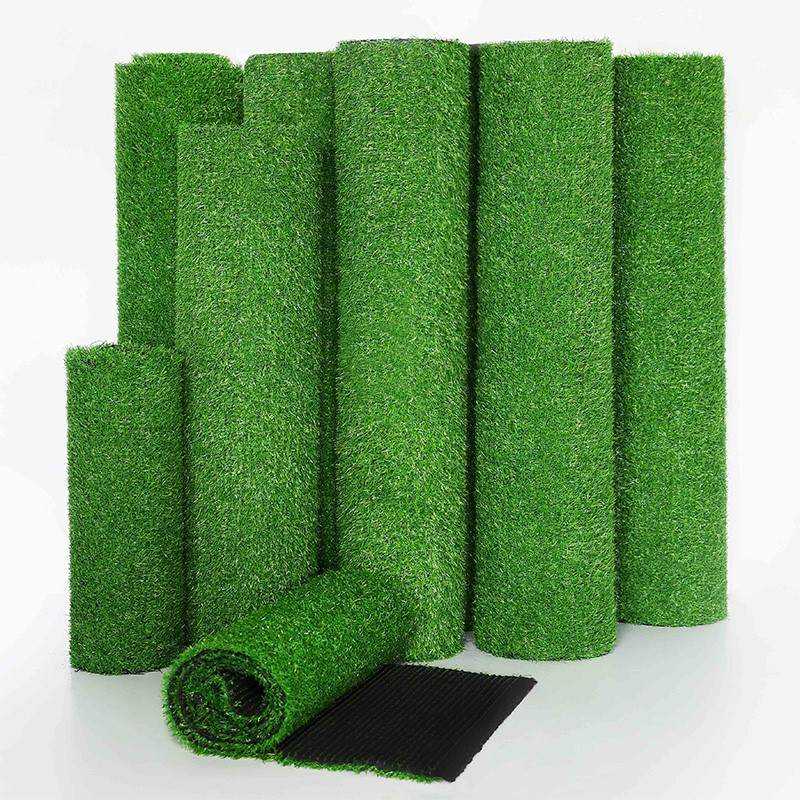Artificial grass, or synthetic turf, is often praised for being a low-maintenance, aesthetically pleasing alternative to natural grass. However, one issue that can catch homeowners off guard is the appearance of weeds growing through artificial grass. While artificial turf reduces the likelihood of weeds, it doesn’t completely eliminate the possibility. If you’re wondering, “why are weeds growing through my artificial grass?”, this article will explain the common causes and offer practical solutions to keep your turf weed-free.

Why Do Weeds Grow Through Artificial Grass?
Artificial grass is typically installed with layers of protective materials that should, in theory, prevent weeds from emerging. However, several factors can contribute to the growth of weeds in or around artificial grass. Here are the most common reasons why weeds might be appearing:
1. Improper Installation
One of the leading causes of weeds growing through artificial turf is improper installation. A properly installed artificial grass system should include several key layers designed to prevent weeds, such as:
- Weed Membrane: This is a geotextile fabric laid beneath the turf that acts as a barrier to prevent weed seeds from reaching the surface.
- Compacted Sub-Base: A well-compacted sub-base (often made of crushed stone or gravel) creates a firm foundation that further discourages weed growth.
If these layers were not installed correctly, or if a weed membrane wasn’t used at all, there’s a higher chance that weeds will find their way through the artificial grass.
2. Weed Growth from Edges
Even with proper installation, weeds can still grow along the edges of artificial grass, particularly where the turf meets natural soil or plants. Over time, seeds from nearby plants or grasses can blow into the edges and take root in any gaps or seams. This is especially true if the artificial grass wasn’t securely anchored at the edges or if soil has been displaced.
3. Weeds Growing from Below
Weeds can sometimes grow from the soil beneath the artificial grass, particularly if the weed barrier has been damaged or if there were existing weeds before the installation that weren’t properly cleared. Some weed species, like dandelions or clover, have deep root systems that can sometimes push through weak points in the turf.
4. Windborne Seeds
Weeds don’t always grow up from below the artificial grass. In some cases, they arrive from above. Wind can carry seeds from nearby plants and deposit them on the surface of the artificial turf. If the artificial grass has accumulated a layer of dust or organic material (such as fallen leaves), these seeds can settle into the debris and begin to grow, mimicking the appearance of weeds growing through the turf.
5. Decomposing Organic Matter
Over time, organic debris like leaves, soil, and dirt can accumulate on the surface of artificial grass. This creates a thin layer of organic material where seeds can germinate. Even if your artificial grass is laid over a solid weed barrier, weeds can still grow in this layer of decomposed matter. This kind of surface weed growth doesn’t penetrate the turf from below but can still make your lawn look untidy.
How to Prevent and Eliminate Weeds in Artificial Grass
If you’ve noticed weeds sprouting in or around your artificial grass, don’t worry—there are effective ways to manage and prevent them. Here’s how you can tackle the problem:
1. Install or Repair the Weed Membrane
If you’re experiencing weeds growing through your artificial grass, it may be due to a lack of a weed membrane or damage to an existing one. Ensure that your artificial grass has a high-quality weed membrane installed beneath it. If not, you may need to have the turf lifted and the membrane installed.
- Tip: If you’re installing artificial grass yourself, never skip the weed membrane. It’s an essential part of the installation process that prevents weeds from growing through the turf.
2. Maintain the Edges
Weeds are more likely to grow along the edges of artificial turf where it meets soil or plants. To prevent this, ensure the edges are securely fastened, and any gaps are sealed. Regularly check the perimeter of your artificial grass for signs of weed growth and pull out any that appear.
- Edging Solutions: You can use brick or stone edging to create a barrier between the artificial turf and nearby soil, reducing the likelihood of weeds encroaching from the sides.
3. Remove Surface Weeds
If weeds have already begun growing on the surface of your artificial grass, manually remove them before they have a chance to spread. Use a weed puller or simply remove them by hand.
- Surface Cleaning: Keep the surface of your artificial grass clean by regularly sweeping away leaves, dirt, and debris. This will prevent windborne seeds from taking root.
4. Use a Weed Killer
For more stubborn weeds, you can use a weed killer. Look for a non-toxic, pet-friendly herbicide that’s safe to use on artificial grass. Apply it directly to the weeds, following the manufacturer’s instructions. Be sure to avoid harsh chemicals that could damage the synthetic turf.
- Preventative Spraying: After removing weeds, apply a weed-preventing spray designed to stop new growth. This will help keep your artificial lawn weed-free for longer periods.
5. Regular Maintenance
Regularly maintaining your artificial grass will greatly reduce the likelihood of weed growth. Here are a few tips:
- Brush the Grass: Use a stiff broom to brush your artificial grass regularly, preventing the buildup of organic debris.
- Hose Down the Surface: Occasionally spray your turf with water to remove dust and dirt that might serve as a breeding ground for weeds.
- Inspect for Gaps: Check for any weak spots or gaps in the turf, particularly around the edges, and repair them as needed.
Conclusion
While artificial grass greatly reduces the chances of weed growth compared to natural grass, weeds can still find a way to sprout if proper installation and maintenance are not followed. The main reasons why weeds grow through artificial grass include improper installation, weed encroachment from the edges, seeds carried by wind, and surface debris accumulating on the turf.
To keep your artificial grass looking pristine, it’s important to follow proper installation procedures, maintain the edges, remove surface weeds promptly, and consider using weed-killing solutions when necessary. With these tips in mind, you can enjoy a lush, green artificial lawn without the headache of weeds ruining its appearance.










